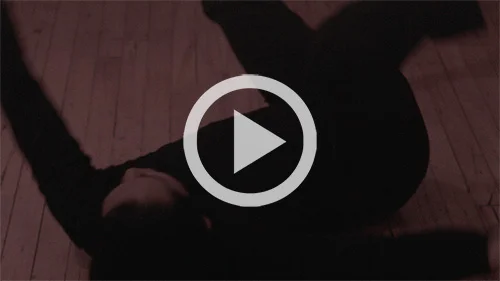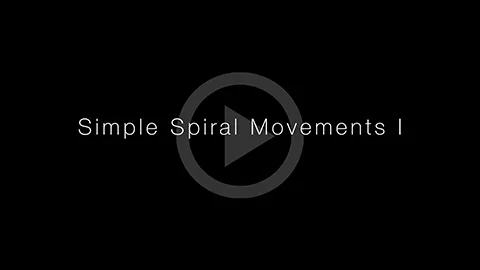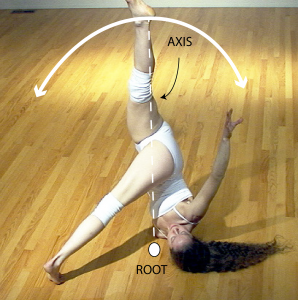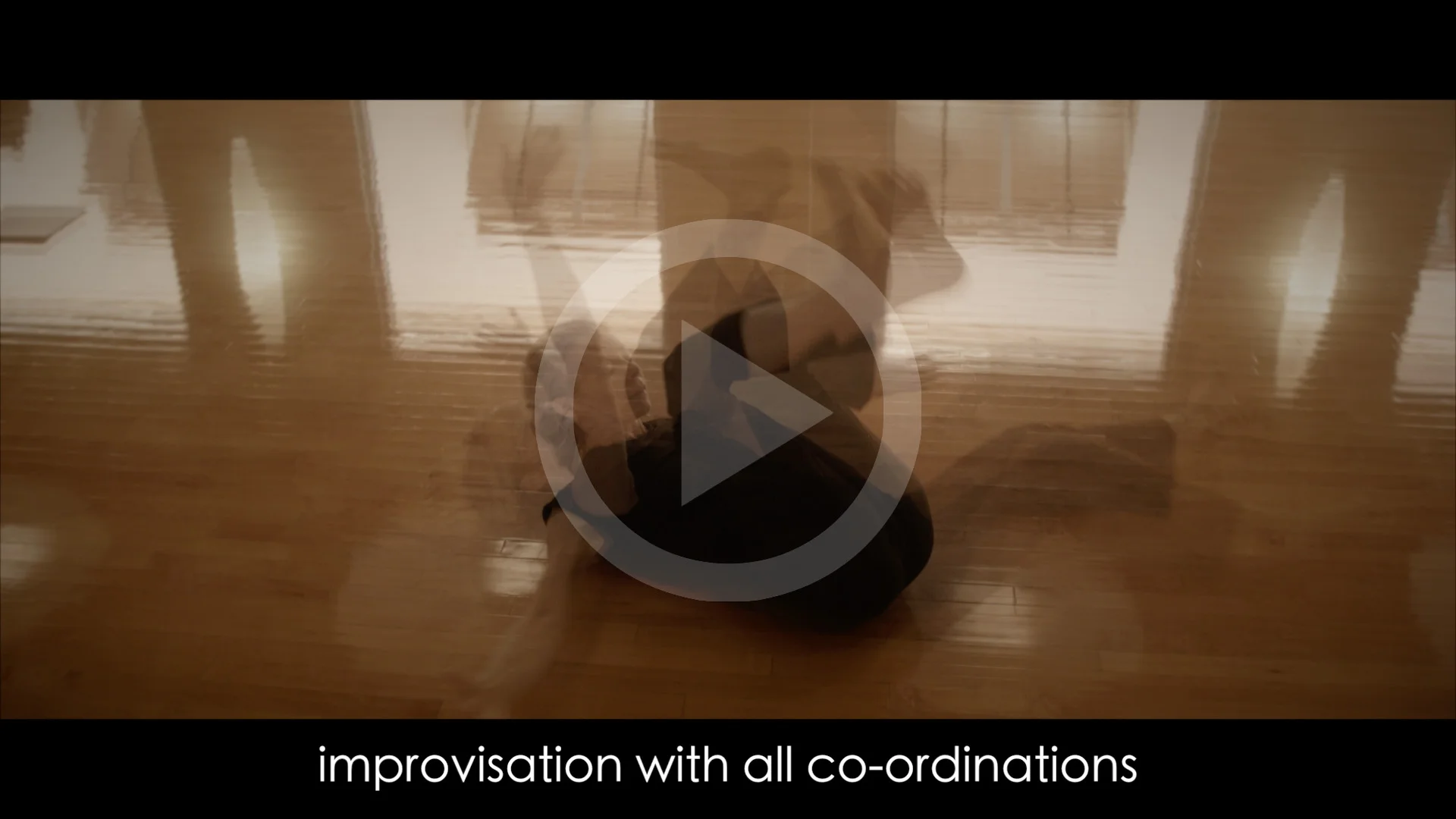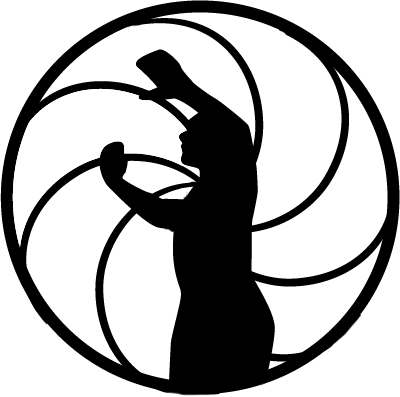Beginnings: Movement From The Void
Like all unexpected life events, we began Spiral Praxis under inauspicious circumstances, in the bustle of our university days. Both Stephanie and I had just met each other while starting a dance improvisation group. Our days were really busy. Stephanie was taking a double major, was in the university dance company, and was choreographing full-evening length works with me almost every quarter; I had a part-time Fellowship work-study scholarship as well as a full schedule of classes that extended well beyond my concentration in dance.
So during the breaks in our schedule, we often spent our free time in a studio simply exploring and giving ourselves what our bodies needed. Instinctively this meant lots of meditation, stillness and breathing. When we did move, we would move very slowly and preoccupy ourselves with simple questions: why did I decide to move?; how did the movement start?; how do I know I’m moving?; what is moving inside me?; and so on. It was very basic and fundamental work, like working out the beginnings of a philosophy. And, in a certain way, it was a kind of philosophy that we were unconsciously developing an inner somatic philosophy. Forget technique, choreography, virtuosity—we were driven instinctively to the roots of movement….for health, recovery, peace and a certain need to fathom the meaning and mystery of movement.
Having no goal or preconceived ideas (wandering for several years in the hermetic universe of university) strangely enough started to give us a sense of direction! We started finding little things. While lying on the floor, we noticed that our bodies would naturally want to stay in place and oscillate. We noticed that our bodies were never completely still; there was always a bit of movement to be found the more inwardly directed our focus became. And most wonderfully, we found that new movements would seem to start to generate themselves, spontaneously, out of this gentle inchoate flow. It seemed that a whole world of kinetic actions—and later ideas—were suddenly emerging from nothing. Out of this meandering exploration grew our Spiral Dance work and, even today, we spend a sizable chunk of our morning still wandering through this embryonic movement state.
Self-Generating Spiral Movement
To give you a flavor of the self-generative power of this process, here are some video clips of spiral dance in action:
These examples of spiral movement are not choreographed but rather “emerge” from the rhythms of the body as it begins to resolve increasingly larger oscillatory patterns. The possible combinations of oscillatory patterns—like the patterns of waves on the ocean—are virtually inexhaustible. Through Spiral Dance, a person can shape their body as they like.
SPIRAL MOVEMENTS ARE GENERATED BY OSCILLATION AROUND A SPATIAL ROOT AND AXIS.
Anyone who has studied the applications of Spiral dynamics in the works of Bach, Mandelbrot, Escher, Poincare, da Vinci—knows that spiral phenomena involve the organic repetition of elemental forms. Spirals are the simplest forms and through iteration they can assume the most complex forms. Every complex entity always begins as a spiral, whether it is a nascent star or galaxy, embryo, wave or seedling. The development occurs through an organic process of repetition and self-iteration that grows under it's own laws... every spiral gives birth to itself constantly.
In Spiral Dance, movements begin as simple oscillation; they are grounded from a root in the body and grow around an axis in space. But this simple seed can very quickly become complex when all the possibilities of this seed are explored. The video below illustrates how just exploring lemniscate limb co-ordinations can create a complex flowering space of movement. This richness of created experience lies at the heart of why Spiral Praxis can help people in so many different ways. It is an exploration of the spiral dynamics, not only of how it affects the body but also the mind and other functions of bodymind.
States of Consciousness in Spiral Dance
Dance is often seen as a purely physical activity. But when dancing is completely embodied, it always becomes meditative—a moving meditation—and the dancer’s state begins to reflect the ecstasy of flowing. Such somatic states are almost never seen in the theatre but we often see them truly expressed in the movement of children. Children are connected to their somatic states of joy and ecstasy. They cannot enjoy life without these states and they seek it in playgrounds, schoolyards, forests, fields and other places that are wide open and encourage movement.
When we realized that dancing in a spiral way could lead to the same feelings of lightness and flow of childhood, we pursued this area of training and research really, really hard. We found that if a person focused their awareness on different levels of dance, they could assume different states of mental consciousness that were flowing and self-generative just like the physical movements of spiral dance. In Spiral Praxis, we have generalized and organized these mental states into a sophisticated theory of learning but the general contour of our approach can be broken up into four classes of mental states. They are developmental and mirror the cognitive progression of humans, starting from an infant-like state and then slowly gaining more complex forms of cognitive awareness:
0° Field States
Field states of consciousness are where movements are whole, undifferentiated and flow without division from one moment to the next. Field states are often seen in people who are in hypnotic or trance states; they can also be seen in the movements of people in the throes of religious fervour or in the gentle motions of primitive animals (i.e., the free flow of octopi, the random waving of caterpillars, the wild fluttering of butterflies). In Spiral Dance, we say a person enters into a state of Ocean Motion when they are processing at this level.
1° Understanding States
These are states of consciousness where movements are in the process of being naturally internalized and embodied by the bodymind. If you watch, for example, a baby who is just starting to learn how to crawl, you see how the child repeats a movement over and over again, but slightly differently each time. If a person could see the trial and error variations of a baby's repeated movements, they would find a complex spiral pattern etched in space and time. The state of consciousness created by repeating variations of movement over and over again is called an Understanding State and one can easily experience this state if one carefully observes and tries to copy the motion of waves on the water, a tree swaying in the wind, or the flights of swallows making repetitive circles in the sky.
2° Constructive States
Constructive States of consciousness are reached when a person begins to focus their awareness on the division of wholes into parts. It is the most common form of mental activity among adults but rarely does one find a flowing example of it amongst people! To reach a state of flow in constructive state a person has to learn how to smoothly initiate thoughts and feelings from the groupings they form of them. In Spiral Praxis, the groupings or classes of thought/emotion is accomplished using different axes of awareness; the integration of these classes is achieved through a process called symmetrization. Oscillation of Constructive states is immensely powerful way to integrate knowledge from many different strata of awareness.
3° Creative States
Creative states refer to a state of consciousness where there has been a deep integration of all the previous levels of awareness. Field states, Understanding states, and Constructive states all superimpose to make a state that is greater than the sum of these parts. In Spiral Praxis, we call creative states moments of resonance where there is a full expression of spiral dynamics—the smooth chaotic cascade of unhindered Flow.
In the video below, Stephanie shows how these different states can be experience through simple dance meditations.
Spiral Dance Transforms into Somatic Process
We rarely danced Spiral Dance technique in its pure form during our early careers as dance choreographers....to be honest, we didn't think it would be understood. It remained—and still largely remains —something that we do behind closed doors, in the sanctuary of our dance studio where we can give it full attention. Nevertheless, the amazing thing has been that all the principles that we observed and discovered through Spiral Dance has become carefully linked to everything that we teach and do in Spiral Praxis. We have used Spiral Praxis dance principles to help adults and children recover from injury; to teach yoga, rock climbing, & meditation; to create original techniques in the field of somatic psychology; to fine-tune techniques in bodywork and massage, and more.
The spiral itself is a universal form that is deeply tied to the way Nature organizes herself. It's no wonder that there is currently a deep intuition and interest in Spiral processes as they relate to somatics and natural learning and healing. In the video shown here, Stephanie demonstrates Spiral Dance techniques to release a contracture in a child’s wrist. This child, Aidan, is challenged with Cerebral Palsy and is the subject of a documentary we are currently filming—through motor techniques developed from Spiral Dance, he has learned how to roll, crawl and begin to walk for the first time in his life. His progress is a testament to the power of Spiral flow dynamics when applied to human somatic issues and he is not alone. In our practice we regularly see people transformed as they learn more about the how their inner functioning circulates along the natural spiral laws and dynamics of Nature.
The spiral, when comprehended deeply, forms a metaphysical framework for the dynamics of Flow. In our case, our entire education has been self-created through Spiral training—we have never received formal training in our somatics work and yet we believe our strong observation and adherence to the underlying Spiral dynamics within the human body has allowed us an uncommon reach into areas of human functioning. Ours is an age of motility and change and frightful disconnection from the inner groundings which make us human and spiritual beings. What dancers bring to this chaotic, fluid world is a sense of balance, adaptability, and appreciation for the ephemerality and value of human life. Spiral Dance is just one small manifestation of the myriad of flow perspectives that are now flooding our collective consciousness—let there be more and more of this kind of somatic investigation in society and among us all!

